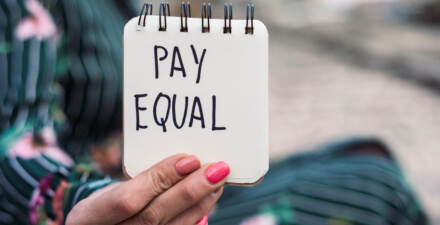How and why innovation in the United States must diversify

Women and disadvantaged minorities in the United States have long been underrepresented in the field of innovation. Economist Lisa Cook at Michigan State University (who is also a Washington Center for Equitable Growth Research Advisory Board member) and her Michigan University co-author Jane Gerson recently examined the causes and effects of this underrepresentation on the U.S. economy. Their research is especially important in explaining why the educational gains by women and people of color in STEM fields, or science, technology, engineering, and math, since the 1960s have failed to translate into a larger share of patents for female and minority inventors.
Specifically, women and ethnic and racial minorities face obstacles at each stage of the innovation pipeline:
- In education and training, a lack of role models at an early age, the prevalence of discriminatory stereotypes and cultural norms, and an absence of peer support for female and minority students together explain the abysmal diversity numbers in STEM fields such as physics, computer science, and engineering.
- In the practice of invention, women, black, and Hispanic inventors face discrimination in the form of noticeably lower employment rates and earnings vis-à-vis similarly qualified white men.
- Finally, in the commercialization of invention, women and people of color are heavily underrepresented in venture capital, and female and minority inventors receive a miniscule fraction of the capital afforded to their white male peers.
In addition to explaining how these barriers hold back the careers of women and people of color, Cook and Gerson point to at least three empirical economics studies that document the benefits of increased racial and gender diversity to innovation and growth in the economy as a whole:
- Cook and Thammasat University economist Chaleampong Kongcharoen find that co-ed patent teams are more productive in commercialization than single-gender teams.
- Economists Chang-Tai Hsieh and Erik Hurst at the University of Chicago and Charles Jones and Peter Klenow at Stanford University estimate that the increasing representation of women and minorities in STEM and other professions explains approximately one-quarter of the total increase in aggregate economic output per worker since 1960.
- Similarly, Rutgers University economist Jennifer Hunt, along with her co-authors Jean-Philippe Garant at the University of Toronto, Hannah Herman at the Federal Reserve Bank of New York, and David Munroe at Columbia University, calculate that closing the gender gap in product design, development, and engineering jobs that exists today could boost U.S. Gross Domestic Product by 2.7 percent.
There are a series of evidence-backed methods that Cook and Gerson argue would increase the representation of women and people of color throughout the field of invention. These efforts include:
- Mentorship programs that provide role models and support networks for underrepresented students, such as the American Economic Association’s summer program
- Efforts to encourage innovation at a young age, such as the creation of innovation-oriented kids’ spaces such as the Spark Lab at the Smithsonian Institution, and the recruitment of underrepresented minorities and girls for participation in these activities
- Blind patent reviews that reduce the influence of implicit biases and stereotypes
- Expansion of the authority of the Equal Employment Opportunity Commission and other government agencies in fighting pay disparities, hostile workplace cultures, and occupational segregation
As I noted in a previous blog post for Equitable Growth, empirical work by Harvard University economics Ph.D. candidate and Equitable Growth grantee Alex Bell and his co-authors indicates that efforts such as these that seek to bring “missing Marie Curies” and “missing Katherine Johnsons” into the field of invention are some of the most effective steps policymakers can take to boost aggregate levels of innovation in the economy.






